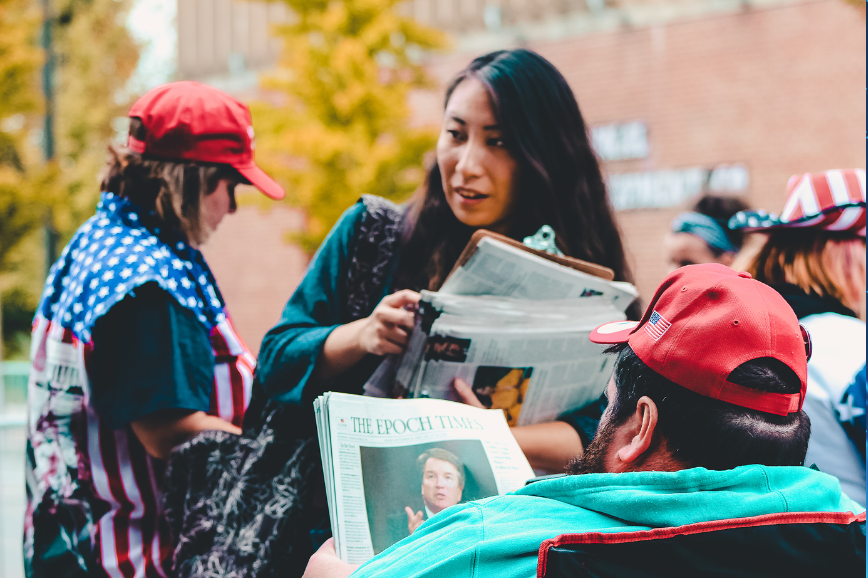
In the digital age, the currency of politics is attention, and the fastest way to get it is often through sensational, emotionally charged, and—critically—false information. Fake news, defined as deliberately fabricated or manipulated information masquerading as legitimate news, is not a new phenomenon. However, the rise of social media and Generative AI has weaponized it into a potent force that fundamentally threatens the integrity of elections and the rationality of public opinion.
The Two Faces of Falsehood: Misinformation vs. Disinformation
To understand the problem, we must first distinguish between its forms:
- Misinformation: False information that is spread unintentionally or by people who genuinely believe it is true. This is often the result of genuine error, poor reporting, or simply misunderstanding the original facts.
- Disinformation: False information that is created and spread deliberately to deceive, manipulate, or harm a target—be it a political candidate, a social movement, or the electoral process itself. This is the venom used in influence operations.
In elections, both forms are destructive, but disinformation—often generated by hyper-partisan groups, political elites, or foreign state actors—is the malicious core of the threat.
The Direct Impact on Elections: Undermining the Vote
Fake news strikes at the very foundations of a democratic election in several critical ways:
1. Manipulating Voter Choice (The Content Lie)
The most common and immediate impact is the propagation of lies designed to swing votes. These narratives often exploit existing societal divisions:
- Smears and False Scandals: Fabricating damaging stories about a candidate’s personal life, financial dealings, or health. For example, a deepfake video of a political leader saying something highly controversial can spread globally before it is fact-checked.
- Policy Lies: Creating false claims about what a candidate plans to do in office (e.g., claiming a tax will be imposed on a popular item or service), specifically to frighten a segment of the population into voting against them.
- Partisan Confirmation: Research shows that voters are often more receptive to fake news that aligns with their existing partisan identity, especially in tight races. This misinformation reinforces their worldview and is more likely to be shared.
2. Suppressing Voter Turnout (The Procedural Lie)
A more insidious form of disinformation involves targeting the voting process itself, often with the goal of disenfranchising specific voter groups:
- False Voting Dates/Locations: Spreading false rumors about a change in the election date or poll closing times, specifically targeting an opponent’s supporters to ensure they miss the deadline.
- Ballot Fraud Myths: Promoting unfounded claims about rigged voting machines, compromised mail-in ballots, or general election fraud, even when no credible evidence exists. This is designed to sow doubt in the legitimacy of the outcome, regardless of who wins.
- Intimidation: Spreading false information intended to intimidate voters or election workers, often leading to harassment and even threats of violence against officials.
The Psychological and Societal Toll on Public Opinion
The long-term effects of fake news extend far beyond one election cycle, eroding the collective trust necessary for a healthy democracy.
1. Exploiting Cognitive Biases
Fake news works because it is expertly crafted to exploit inherent human weaknesses:
- Confirmation Bias: People tend to seek out and believe information that confirms their existing beliefs and discard information that contradicts them. Fake news creators feed this bias directly, creating “echo chambers” and “filter bubbles” that reinforce partisan silos.
- The Continued Influence Effect: Even after a piece of fake news is officially debunked, the initial, false information continues to influence people’s beliefs and inferences. The retraction rarely achieves the same viral spread as the original lie.
- Emotional Contagion: Falsehoods are often designed to trigger strong emotions like outrage, fear, or anger. Studies show that emotionally charged content spreads significantly faster and deeper on social media than sober, factual news.
2. Erosion of Institutional Trust
Constant exposure to conflicting and sensational information leads to widespread public confusion and fatigue. The result is a dangerous decline in faith in essential institutions:
- Media Distrust: When it’s impossible to tell what is real, people stop trusting all news sources, including reputable professional journalism.
- Political Cynicism: Voters become cynical about politicians and the democratic process itself, leading to reduced engagement and satisfaction with the system.
- Societal Polarization: By reinforcing extreme narratives and targeting specific groups with tailored falsehoods, fake news exacerbates social and political divisions, making it harder to find common ground.
A Multi-Front Defense: What We Can Do
Combating the venom of fake news requires a collective effort from technology, government, and the public.
Fake news is a continuous attack on shared reality. While technology enables its spread, a combination of technological safeguards and informed, critical citizenship remains our strongest defense against its corrosive influence on our elections and our minds.





